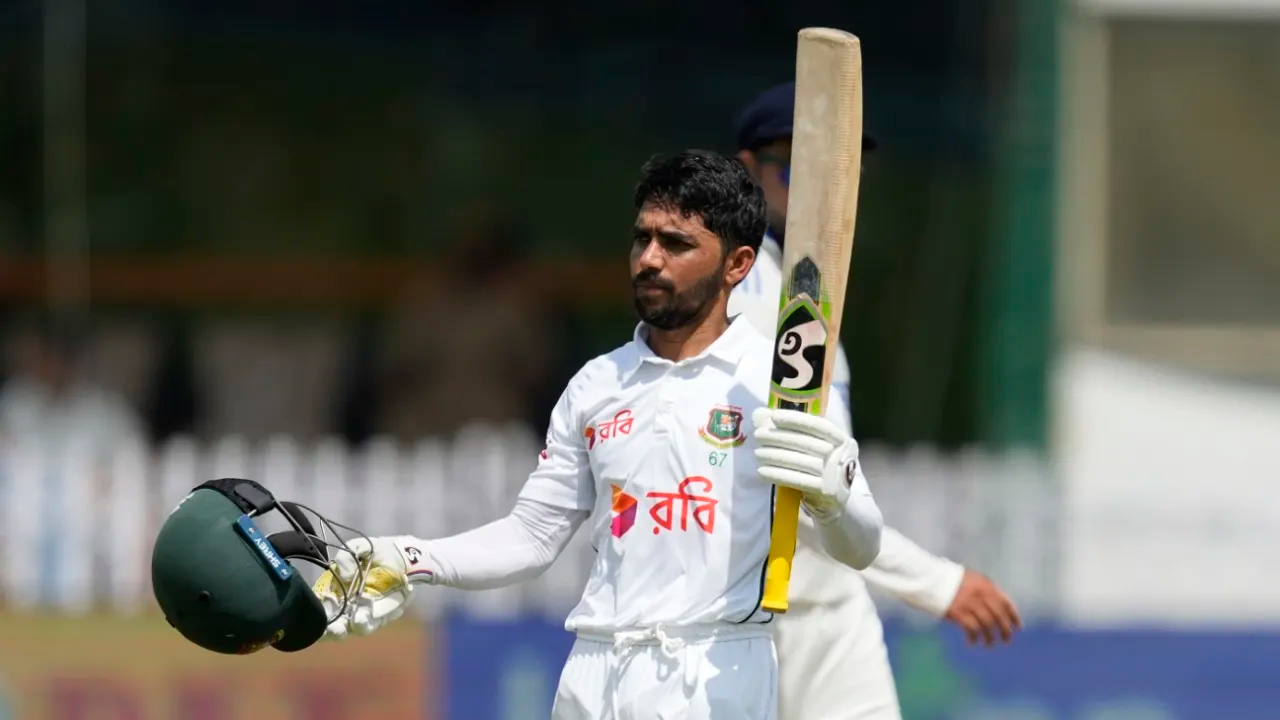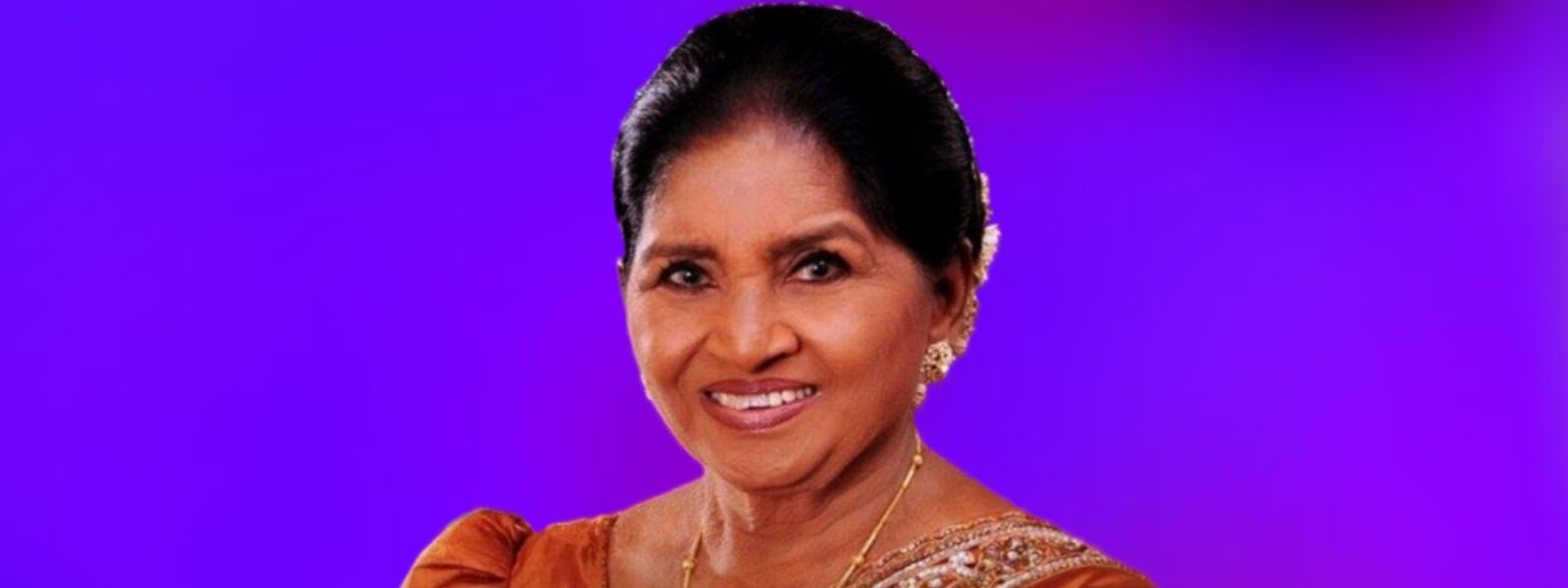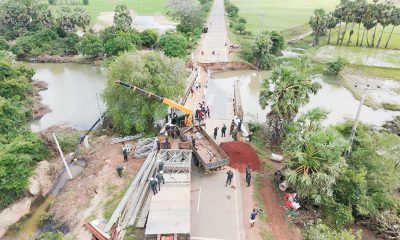Latest News
Mominul, Jaker help Bangladesh avoid follow on

West Indies maintained their control of the Antigua Test with Bangladesh ending the day on 269 for 9 at stumps on the third day. The hosts hold a lead of 181 runs after Alzarri Joseph, Jayden Seales and allrounder Justin Greaves nearly did enough to enforce a follow-on on Bangladesh. A late resistance helped the visitors avoid it, but they remain well on the back foot after three days of play.
Bangladesh looked to bat steadily on a slow surface, but despite starts, couldn’t find one batter to go big like West Indies achieved in their first innings. Jaker Ali and Monimul Haque got out soon after reaching their fifties, while Litton Das fell for 40. Jaker and Taijul Islam added 68 runs for the seventh wicket to get Bangladesh closer to the follow-on mark of 251, which they crossed in the day’s last hour.
Bangladesh started the third morning quietly, with Mominul getting a pair of boundaries off Shamar Joseph. Shortly afterwards, Kemar Roach removed Shahadat Hossain for 18, for which he played 71 balls. It was an innings going nowhere before he edged to first slip where Kavem Hodge took a low catch.
Mominul and Litton saw to the end of the first session, continuing to bat obdurately. The usually free-flowing Litton started off with an easy square-cut boundary off Alzarri, but then mostly played within himself. Only in the over before the lunch break, Litton freed his arms to get another four, this time cutting Shamar.
West Indies however got the breakthrough shortly after the lunch break when Seales trapped Mominul lbw after the left-hander reached his 21st fifty.
Stand-in captain Mehidy Hasan Miraz then endured a test of bouncers from the West Indies attack, with Alzarri even hitting him on his shoulder. Seales chipped in with his share of bouncers and verbals.
Litton also got bogged down, resulting in getting bowled by a slightly short delivery from Shamar that he dragged onto his stumps. Litton made 40 off 76 balls with three fours, but it was a disappointing exit for one of three experienced Bangladesh batters.
Mehidy struck a couple of boundaries off Greaves and Shamar later in the second session, but the short ball kept bothering him. After surviving 66 balls, Mehidy finally popped an Alzarri bouncer to short-leg where Mikyle Louis took a comfortable catch.
Then came the unlikely revival act by Taijul and Jaker. The pair did take advantage of a tiring West Indies attack while also being disciplined with their choice of shots. They had to scavenge for scoring opportunities but were always looking for the odd boundary. They survived a dropped chance apiece too.
Taijul kept using the pace of the West Indians, guiding the ball behind square on the off-side, while Jaker tried to force the issue. Jaker got his four boundaries with the pull shot and the hoick, one of which helped him bring up his fifty. Alzarri separated the pair after they had batted along for 19 overs when he bowled Taijul. Jaker fell to a Seales catch in the deep midwicket boundary, as he tried to clip Greaves for a big one.
There was a bit of by-play between Alzarri and Taskin Ahmed towards the end, particularly after the fast bowler hit the Bangladeshi tail-ender on the head. The two exchanged words, but Alzarri couldn’t knock off the tenth Bangladesh wicket against the fading light.
West Indies came into the third day on the back of a fine batting performance on the first two days. They continue to have control of proceedings at North Sound going into the penultimate day and will want rain to stay away in pursuit of a result.
Brief scores:
Bangladesh 269 for 9 in 98 overs (Jaker Ali 53, Mominul Haque 50, Litton Das 40, Mehidy Hasan Miraz 23, Taijul Islam 25; Alzarri Joseph 3-69, Jayden Seals 2-42, Justin Greaves 2-34) trail West Indies 450 for 9 dec in 144.1 overs (Justin Greaves 115*, Mikyle Louis 97, Alick Athanaze 90, Kavem Hodge 25, Kemar Roach 47; Hasan Mahmud 3-87, Taskin Ahmed 2-76, Mehidy Hasan Miraz 2-99) by 181 runs
[Cricinfo]
Latest News
Over 1,500 flights cancelled as winter storm Devin hits US holiday travel

Thousands of flights have been cancelled and delayed in the United States due to winter storm Devin, airline monitoring website FlightAware reports, dealing a blow to air travel during peak holiday time.
A total of 1,581 flights “within, into or out of the” US were cancelled and 6,883 delayed as of 4pm US Eastern Time (21:00 GMT) on Friday, according to FlightAware, which describes itself as the world’s largest flight tracking data company.
The delays and cancellations came as the US National Weather Service warned of winter storm Devin causing “hazardous travel conditions” and heavy snow forecast across parts of the Midwest and northeast.
More than 40 million Americans were under winter storm warnings or weather advisories on Friday, plus another 30 million under flood or storm advisories in California, where a so-called atmospheric river has brought a deluge of rain.
New York City, the largest US city, was bracing for up to 250mm (10 inches) of snow overnight on Friday, the most expected in four years. Temperatures were forecast to drop into the weekend when an Arctic blast is expected to swoop down from Canada.
New York’s John F Kennedy airport, Newark Liberty international airport and LaGuardia airport warned travellers of potential delays or cancellations. More than half of the flight cancellations and delays took place at these three airports, according to FlightAware.
[Aljazeera]
Foreign News
Thailand and Cambodia agree on ceasefire to end weeks of deadly fighting

Thailand and Cambodia said they have signed a ceasefire agreement to end weeks of fierce fighting along their border that has killed more than 100 people and displaced more than half a million civilians in both countries.
“Both sides agree to an immediate ceasefire after the time of signature of this Joint Statement,” the Thai and Cambodian defence ministers said in a statement on Saturday.
“Both sides agree to maintain current troop deployments without further movement,” the ministers said.
The ceasefire took effect at noon local time (05:00 GMT) on Saturday [27] and extends to “all types of weapons” and “attacks on civilians, civilian objects and infrastructures, and military objectives of either side, in all cases and all areas”.
Al Jazeera’s Assed Baig, reporting from the Cambodian border city of Poipet, said the “guns seem to have fallen silent” as both sides adhered to the truce.
“But I must tell you, right up until the point of that ceasefire being implemented, there was some intense firing going on… really, really intense – right up until that moment. And it kind of gives you the idea of how fragile this actually is,” Baig said.
“That doesn’t instil a great deal of confidence in people here who want to return home and will be watching if this ceasefire will hold,” he said.
[Aljazeera]
Latest News
Latha Walpola passes away at the age of 92

Sri Lankan singer Latha Walpola has passed away today (27) at the age of 92.
-

 News5 days ago
News5 days agoMembers of Lankan Community in Washington D.C. donates to ‘Rebuilding Sri Lanka’ Flood Relief Fund
-

 News3 days ago
News3 days agoBritish MP calls on Foreign Secretary to expand sanction package against ‘Sri Lankan war criminals’
-

 Business7 days ago
Business7 days agoBrowns Investments sells luxury Maldivian resort for USD 57.5 mn.
-

 News6 days ago
News6 days agoAir quality deteriorating in Sri Lanka
-

 News6 days ago
News6 days agoCardinal urges govt. not to weaken key socio-cultural institutions
-

 Features7 days ago
Features7 days agoHatton Plantations and WNPS PLANT Launch 24 km Riparian Forest Corridor
-

 Features5 days ago
Features5 days agoGeneral education reforms: What about language and ethnicity?
-

 Features7 days ago
Features7 days agoAnother Christmas, Another Disaster, Another Recovery Mountain to Climb













